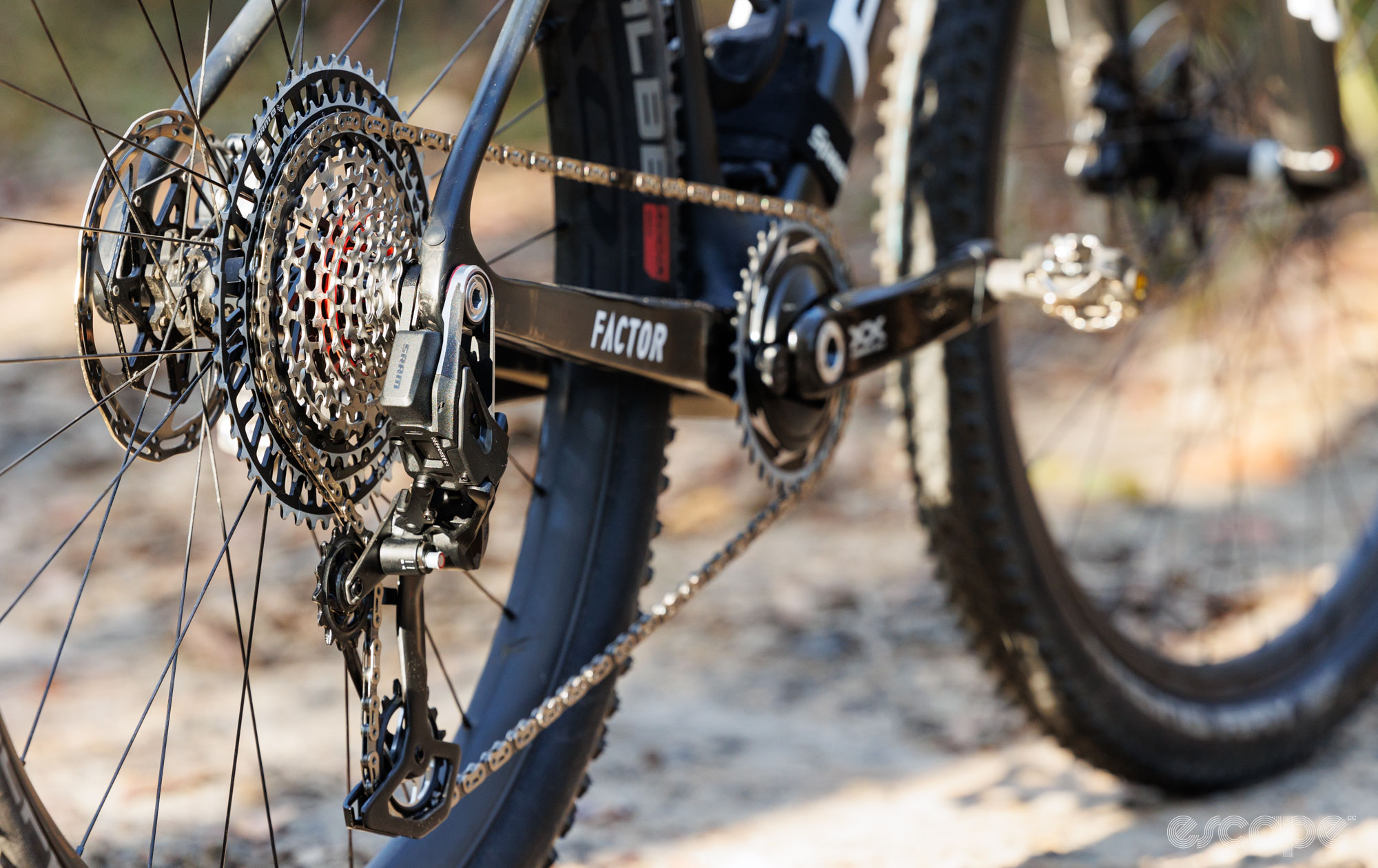SRAM’s freshly announced Eagle mountain bike transmissions are a gamechanger for derailleur-based systems. That’s not hyperbole put forth by a marketing team. What else would you call a rear derailleur that takes the place of the frame’s bendable derailleur hanger and aims to solve almost all common setup issues? And most impressively, it’s a fitment design that SRAM has already, sneakily, managed widespread industry adoption of.
Today SRAM officially unveiled its XX SL, XX, and X0 AXS 1×12 speed groupsets which all share the same direct mount derailleur concept, 10-52T gearing range, and insanely smooth shifting under immense load. I’ll walk you through this new technology, how we got here, what this could spell for future products (including road and gravel), and why I’m rather blown away by it, as, after all, I’ve been riding the top-tier and lightest XX SL version in my spare time (which I’ve had plenty of recently).
This is a big product release with a lot to talk about. If you prefer audio, then be sure to check out my dedicated Geek Warning podcast episode with Lachlan McKillop of SRAM’s technical communications team, where we discuss how this new system works and the features it offers.
Before we continue, a quick summary:
The short of it: SRAM’s latest mountain bike groupsets spell the end of the rear derailleur hanger.
Good stuff: New benchmark in shifting under load. Simplest setup and ownership. Ultra robust design. Integrated powermeters. More repairable.
Bad stuff: Shifter ergonomics. Locked into UDH frames and a 10-52T cassette. Weird chain compatibility. More replaceable than serviceable. High pricing on wear parts. DUB cranks are still hard to remove.
How we got here
Look at your derailleur-based bike, and you’ll see the rear derailleur is bolted to a dropped hanger that belongs to the frame. Recent decades saw the derailleur hanger commonly become a replaceable component, and more fragile bike materials were commonly fitted with a hanger made from a softer material to act as the sacrificial lamb in the event of damage. As more gears were added to our bikes – often with the power of electric motors and greater leverage for bigger cogs – the more stress was put on the system, making it critical that those hangers were strong and remained dead straight.
As recently as 2018 we had no standards for these replaceable derailleur hangers. Bike mechanics around the world have drawers of spare hangers, but inevitably, it’s near impossible (or at least financially wasteful) to keep stock of them all. And so here we are: there are businesses dedicated to manufacturing, stocking, and selling the hundreds of different derailleur hanger shapes and sizes in existence and there’s little sign of the problem slowing. That was until SRAM strolled into town like something out of a fairytale.

In 2019 SRAM publicly revealed the Universal Derailleur Hanger (UDH). It was a low-cost hanger made of polymer material that sought to unify the derailleur hangers found on mountain bike frames moving forward. Based around a 12 mm thru-axle and a consistent axle thread pitch, the UDH promised improved shifting stiffness, a way to pivot in case the derailleur took a knock from the front, and also gave a little shelf to help push the chain back onto a 10T cog. Better yet, it was backward compatible with all prior derailleur-based systems. All that was required was for frame manufacturers and bike brands to adopt it. And adopt it they did. There has barely been a new mountain bike released in the past two years that doesn’t utilise the UDH standard.
SRAM earned plenty of praise for what at first just seemed like a goodwill gesture to unify the industry. And then the leaks started to occur. Patent documents were revealed of a derailleur that sandwiched the frame dropout, then spy shots of riders on prototype direct-mount derailleurs surfaced, and then the biggest races in the world were won on the stuff. Soon it was evident that the UDH was a placeholder for something bigger, more robust, and much more integrated.

OK, so the concept of directly mounting a rear derailleur isn’t new. Shimano had a real crack at it in 2003 with its Saint downhill range with the derailleur mounted off a protruding rear hub axle. Even as recently as 2012 we saw Shimano pushing the concept of a direct-mount derailleur that offered a stiffer and more robust interface. However, while that most recent iteration saw some uptake (and more of it on the road in recent years), it’s a far cry from the singular-shape frame integration that SRAM’s UDH achieves.
The list of official SRAM-approved UDH-compatible bikes is immense – there are even a few gravel bikes starting to appear on there, such as the Enve Mog and YT Szepter.
Old meets new
Whether you’re looking at the new XX SL, XX, or X0, these new Eagle transmissions offer an interesting mix of old and new. And yes, ‘transmission’ is SRAM’s wording.
Carrying over from the previous Eagle offerings is SRAM’s AXS wireless protocol. This means the new derailleurs can be shifted with pre-existing AXS shifters and accessories from across mountain, gravel, and road disciplines. Similarly, the little 24-gram rechargeable battery that powers the derailleurs across the entire AXS lineup remains unchanged. However, the previously claimed 25-hour derailleur battery life is marginally reduced due to the stronger clutch mechanism.
From a functional sense, it’s still a 1×12-speed drivetrain. The 520% gearing range carries over from the previous Eagle. The cassette is still held in place through SRAM’s XD cassette driver body standard – something that just about every modern hub and wheelset supports except for Shimano. And the cranks still spin on SRAM’s DUB (28.99 mm spindle) bottom brackets. Also, the whole system is based around a consistent 55 mm chainline which was introduced with UDH.

The rest is new, very new, and with many proprietary elements that can’t be mixed with older products.
Previous Eagle AXS was an electronic derailleur designed to take the place of a mechanical one. By comparison, SRAM claims its new Eagle is the first electronic-specific drivetrain the company’s ever produced. SRAM now knows exactly where the derailleur sits in relation to the frame, the hub axle, the chainline, and the cassette size (10-52T). As a result, SRAM has produced a system that is positionally mapped for each specific cassette cog, and the derailleur is now tuned to shift at a rate based on the cog it’s sending the chain to.
The derailleur even has a bit of tilt built into it (not too dissimilar to the Yaw feature seen in SRAM’s front derailleurs) to better line up the chain with the chainring up front; it’s enough of an angle that the derailleur can look bent to riders behind, but it’s intentional. Bigger picture, all of this means the setup of this new derailleur is vastly simplified and unlike anything before it.
Gone are the limit screws. SRAM’s often tricky, sensitive, and sometimes self-loosening B-tension adjustment has been removed entirely, too. Most of the setup is now done before you even install anything. SRAM has an app and/or web-accessible database of UDH-compatible bikes to tell you how many links to remove from a new chain and what position to set the derailleur in.

The equivalent of B-tension adjustment is now done with a new tool-free “Setup Key” at the derailleur cage when first installing the derailleur. Meanwhile, the only other adjustment available is the electronic trim that moves the derailleur side-to-side in 0.2 mm increments. Interestingly, the trim is only needed because the width of the hub axle end cap is the only part of the puzzle that SRAM hasn’t been able to standardise.
As covered, the rear derailleur takes the place of the Universal Derailleur Hanger. The derailleur securely sandwiches the dropout hole, with its own bushing in the middle. The 12 mm rear thru-axle then threads into the mounting bracket of the derailleur. Want to remove the rear wheel? Simply push the derailleur cage forward into its cage lock position (same as old Eagle), and undo the thru-axle – the derailleur stays attached to the frame.
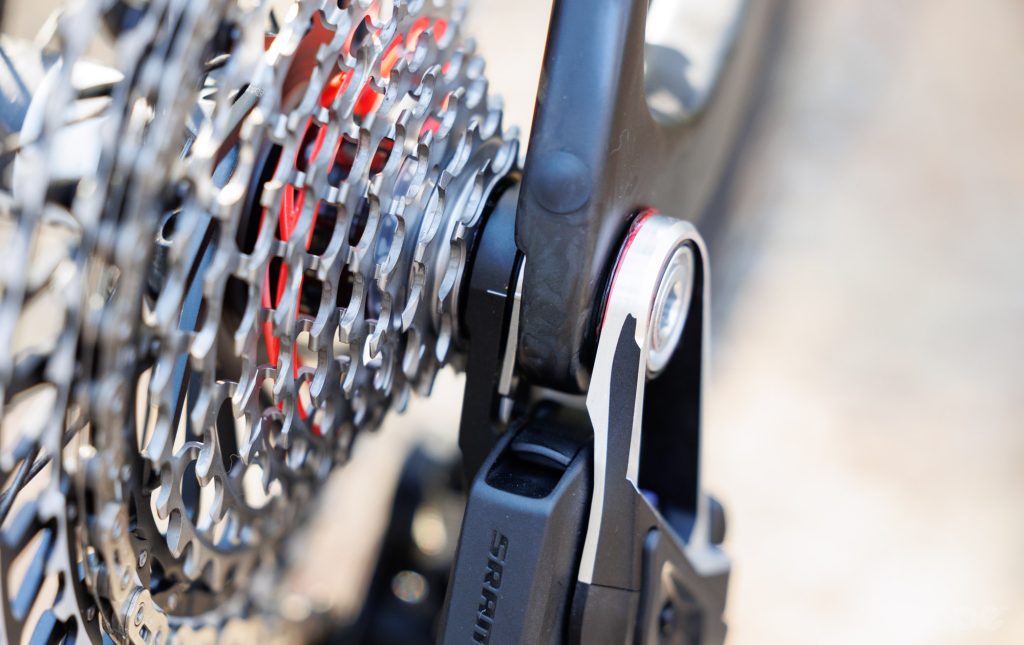
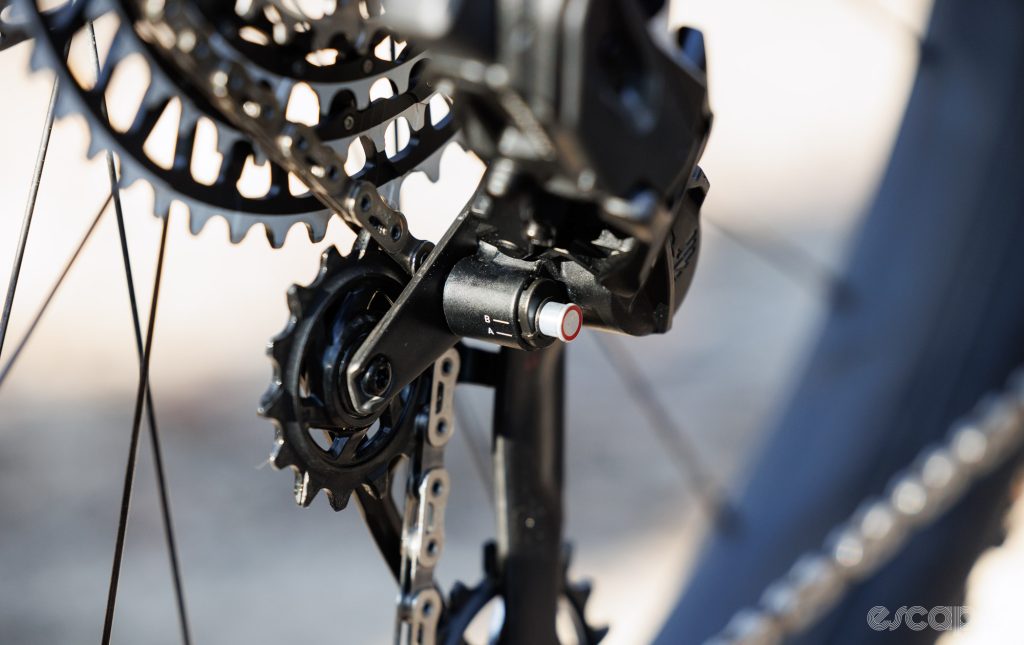
If the frame doesn’t feature a UDH, such as any and all mountain bikes prior to 2019, then you simply cannot run this new system. SRAM will continue to offer its pre-existing Eagle AXS products to support the vast majority of customers currently with and/or locked into a more traditional derailleur-hanger-based system. Meanwhile, all new UDH-compatible bikes have the faithful UDH hanger if you wish to run Shimano, older SRAM, or other derailleur options.
As first seen within SRAM’s road lineup, the chain now features a Flat Top style shaping with proprietary oversized rollers (7.9 mm) designed to mesh with matching cogs. Confusingly, the new Eagle transmission runs on its own T-Type chain that SRAM officially states is incompatible with both its 12-speed road and gravel-focussed Flat Top chains and previous Eagle mountain bike chains. Unfortunately, the company hasn’t clearly explained why such incompatibility exists.
I haven’t had a chance to try a T-Type chain on a Flat Top drivetrain, or vice versa, but I have measured the individual pieces of both chains and found no obvious discrepancies. Even lateral movement/flexibility appears closely comparable, while a visual inspection offers only the vaguest of differences with additional outer plate chamfering and curvature on the MTB T-Type chain.
To add a Donnie Darko-level of consumer confusion into the matter, SRAM states that its 1×12 AXS Road chainrings are cross-compatible with the T-type chain (to make a mullet-style gravel bike). And if that didn’t raise an eyebrow, get this: the new T-Type chainrings are also backward compatible with older Eagle drivetrains, too. I’m left scratching a hole in my head over this supposed chain incompatibility.
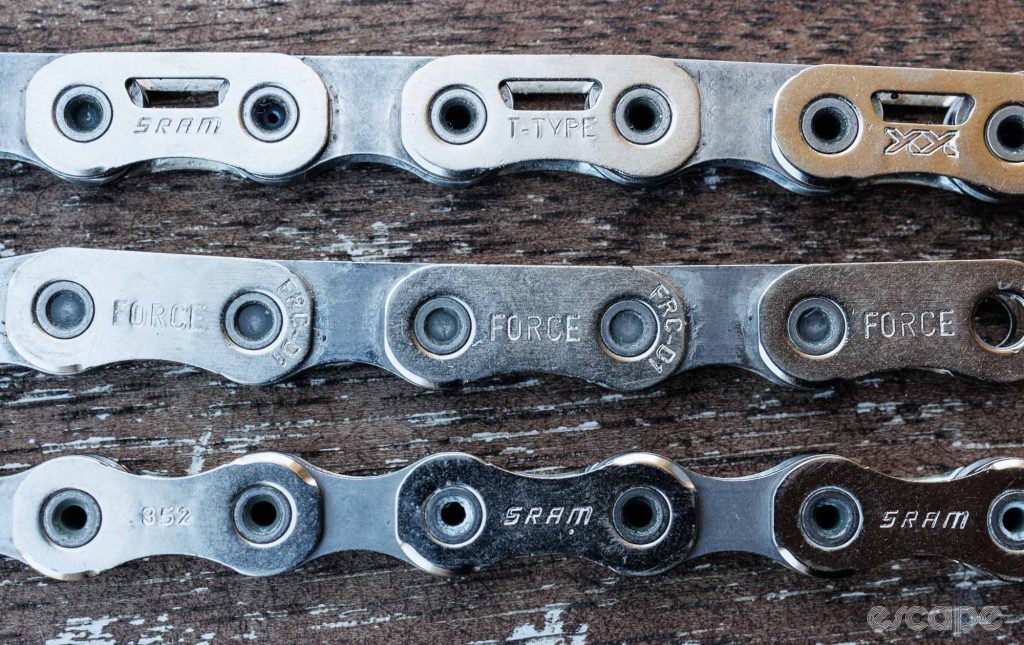
The rear cassette is also new and unique to the T-Type chain. All but the middle cog now feature narrow-wide tooth profiling that’s designed to immediately engage the chain for rapid shifts, especially under full pedalling load. Imagine a single link of the chain moving to the next cog during a shift – that’s all this design needs to enact a shift under full power. There’s also the good news that the old 42-52T ratio jump is now a marginally smoother transition: the new cassettes now have a progression of 52/44/38/32/28/24/21/18/16/14/12/10.
SRAM is no longer milling as much of the cassette from a single block of steel. Rather, the new cassettes combine a milled block with the three biggest cogs pinned in place. This design revision saves weight and surely reduces material waste (and likely cost, too). From an installation perspective it’s still one piece, installed and removed exactly like previous XD cassettes.
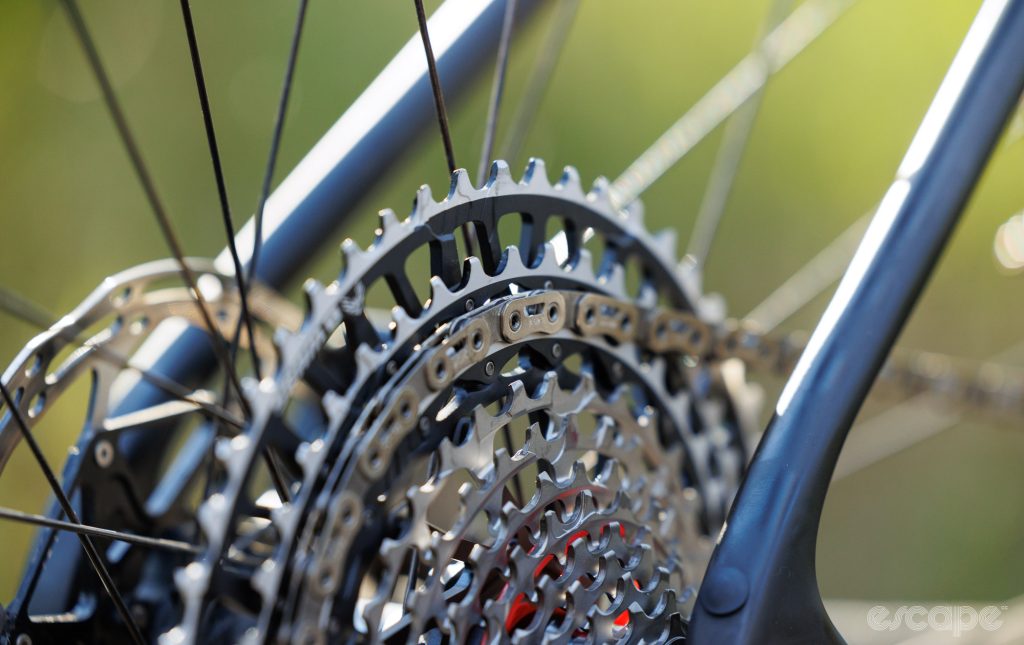
While all pre-existing AXS shifters can be used, there are new Eagle AXS dual-button pod shifters. These no longer match the aesthetic of a mechanical shifter and rather hang below the handlebar with the buttons arranged vertically. SRAM is keeping with its MatchMaker concept for clean integration with its brake lever clamps. Alternatively, there’s the Infinity clamp (aka band clamp) to mount directly to a regular mountain bike handlebar (22.2 mm). The symmetrical shape of the shifter allows it to be run on either the left or right side of the bar, and it can also be used to control other AXS products such as the RockShox Reverb seatpost. The shifter pods can be rotated within the clamp for unimpeded rotation adjustment (on one axis).

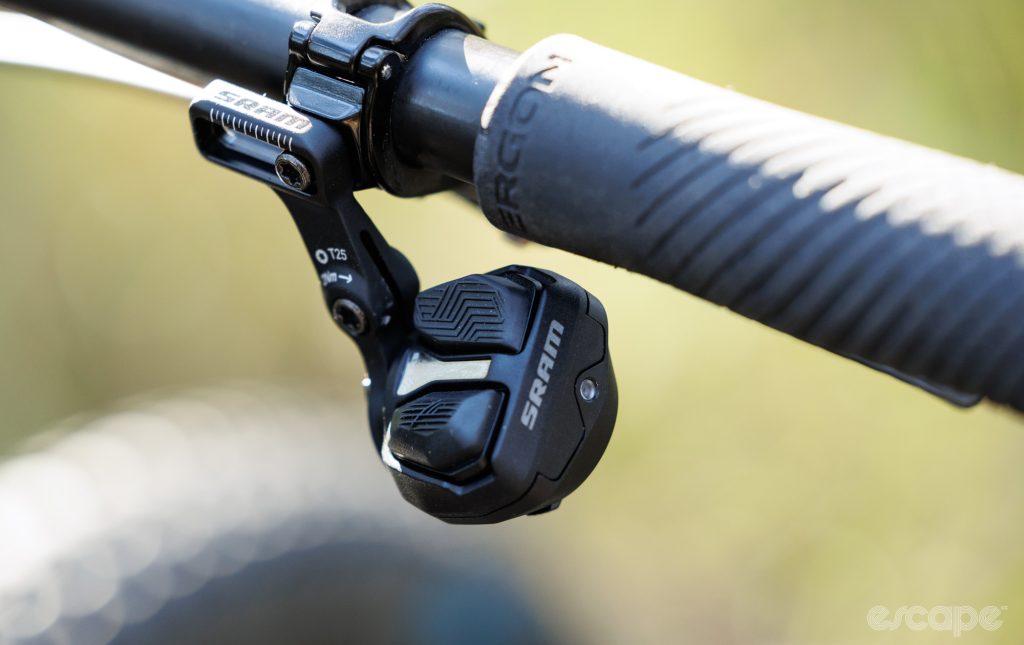
These pod shifters are available in two versions. The more expensive Ultimate version builds on the base model with replaceable concave and convex buttons to pick and choose between. The pod shifters run on a single CR2023 battery that can be replaced without tools.
How the derailleur survives the trail
There is just a ridiculous amount to say about this derailleur, and I’d point you toward my dedicated podcast episode or SRAM’s literature if you want to know more. Here, I’ll cover the most obvious question: Without a derailleur hanger, what has SRAM done to ensure this derailleur isn’t just an expensive mistake waiting to meet a stick/rock/crash/pedal of doom? And what about the frame?
Firstly, the days of clipping a derailleur that’s sticking out in line with your feet are long gone. This derailleur now sits more out of the way and tucked in than before. It still protrudes past the chainstay, enough to save your frame if you wreck, just not significantly wide of it.
Then there’s that frame and axle interface. The strongest part of the derailleur – the body – reinforces what’s already a solid part of the frame. That whole machined aluminium junction is then further reinforced by both the mounting bolt and the rear thru-axle. It creates an impressively rigid system, all tied together by that rear axle. This is the part that sticks proud of the chainstay and it’s strong enough that I found SRAM’s Lachlan McKillop just casually standing one-footed on his own derailleur with the bike laid down – an odd place to hang while checking Insta, but also a good example of how sturdy the base of the derailleur is. This solid aluminium derailleur body also now shrouds most of the battery, so that’s also more protected than before.
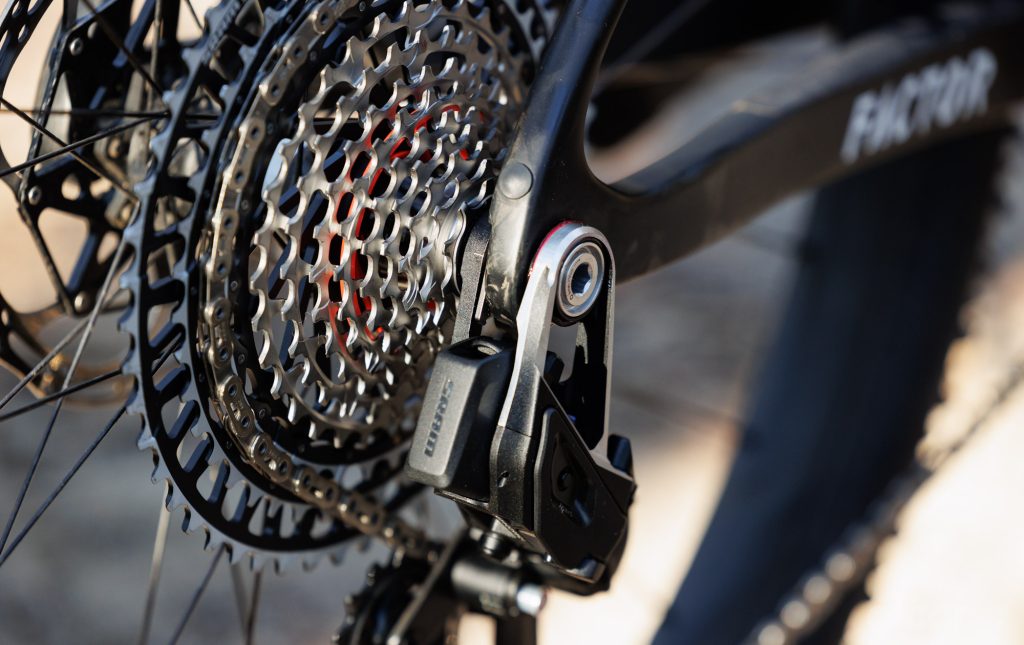
That derailleur body, along with many of the inner workings, aren’t serviceable. However, many other parts are. The whole cage assembly, along with the clutch, can now be replaced tool-free. The bolt and bushing that connect the derailleur to the frame are replaceable. The outer parallelogram plate of the derailleur can be replaced. Adding further protection on the XX and X0 models are replaceable skid plates to keep things looking fresh. And in music to the ears of bike shops around the planet: all of these replacement parts are fully interchangeable between the three price tiers of derailleurs.
That cage assembly is unlike anything I’ve seen before. With chain tension removed, the entire cage – including the integrated and still-not-adjustable-but-higher-force clutch – simply unscrews from the derailleur. No tools are required, and it’s simple enough that I’d even suggest doing it when packing a bike for travel.
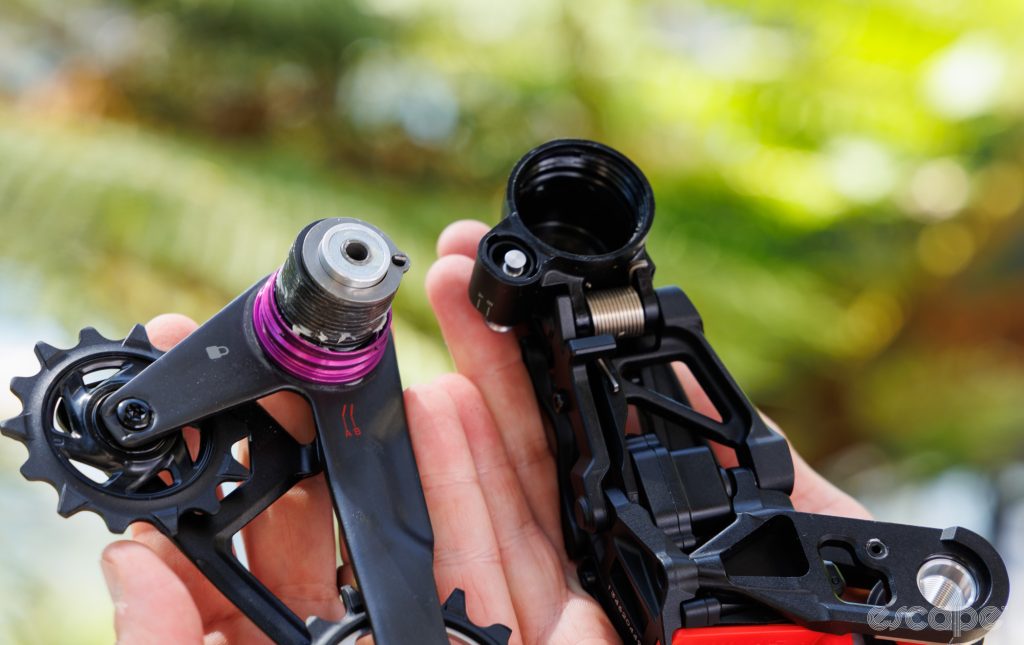
While simple to replace, the cage has a few sneaky tricks to ward off violent sticks. The geometry of it means trail debris doesn’t have much space to catch onto the front edge, and the lower pulley wheel will help to push it clear of the cage, too.
Then there’s the Magic Wheel (only on XX SL and XX derailleurs) which aims to keep the gaping holes of the new oversized 16T lower pulley wheel safe from sticks (and yes, there are friction-based benefits to these larger pulley wheels). The Magic Wheel is a two-piece pulley wheel; the central aluminium part houses the bearing and provides the structural support without much material. Meanwhile, the exterior component of the pulley wheel is a composite for quieter running on the chain. As for the magic part, that gets revealed if a stick (or hex key) finds its way into one of the weight-relieving slots within the pulley wheel – here, the two materials will break free of each other and allow the drivetrain to still be pedalled without damage to the derailleur. It’s hard to understand without a visual demonstration and it’s always damn clever.
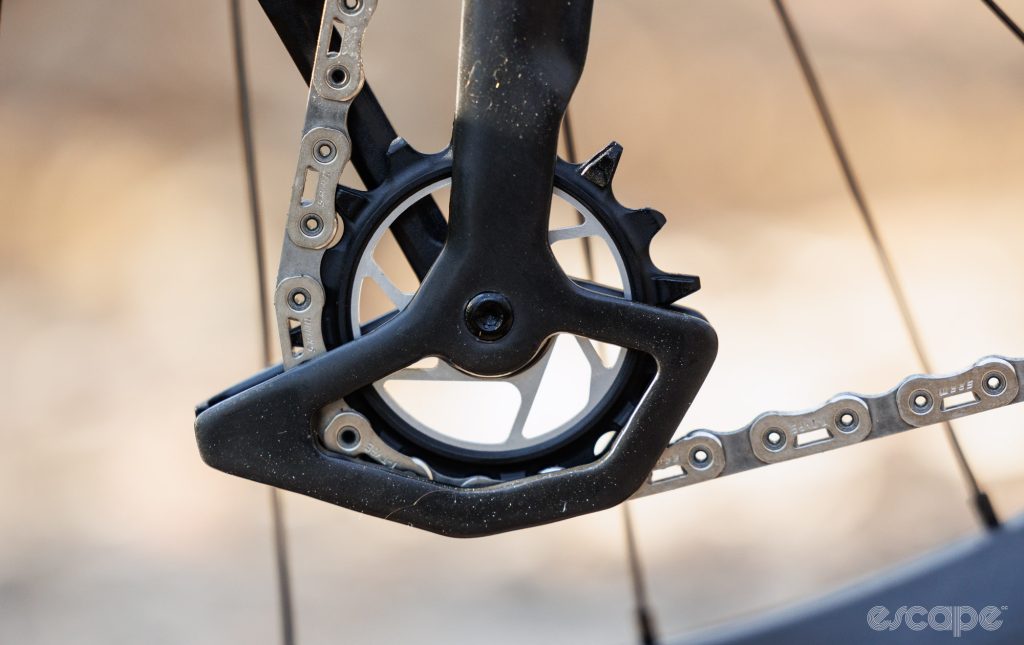
Sorry, there’s more.
If the derailleur gets hit from the side (like from a rock strike or sliding out in a corner), it features an override clutch that’ll allow it to shift inboard. This feature was also present with the previous Eagle and isn’t different to how a mechanical derailleur protects itself. Still, it’s neat to be able to kick your expensive derailleur and know it’s not stressing the frame.
Whack the derailleur from the front, and it’ll pivot backward. To reset it, loosen the rear wheel axle and watch the derailleur spring back to its preset position.
Sure, this derailleur isn’t indestructible – I’m sure people will find dumb ways to create expensive damage. My point is that SRAM has thought about the most common failure modes and has provided several truly brilliant solutions. The new design is not only more protected from impacts to begin with, but both the derailleur and the frame it connects to would arguably roll away unscathed if you were to try curb stomp it. The company has also atoned for its previous sins by offering replacement cage/clutch assemblies. Cages can get wrecked, and clutches can wear out, so this is great, but I’m also not quite ready to provide forgiveness for the previously unserviceable items.
Separating the three tiers
The three levels of new Eagle are all entirely cross-compatible with each other and even share many of the same core parts to provide an indistinguishable shift experience. What separates them is price, weight, and intended use case.
XX SL (as tested) is the top-tier, lightest, and most expensive option. It’s designed for cross-country racing, where low weight is sought over absolute durability and impact protection.
The XX SL derailleur mainly saves weight through its full carbon cage, a lighter lower guide pulley (with that Magic rotating feature), and the lack of skid plate protection. I weighed my sample XX SL derailleur at 417 g without a battery. By comparison, a previous-gen Eagle XX1 derailleur is lighter at 377 g (including the UDH at 27 g).
An XX SL cassette features nine cogs machined from a single piece of steel, while the three largest are machined from aluminium. The matching chain has both hollow links and pins. All of this weight-relieving means, unlike the other tiers, XX SL chain and cassette aren’t recommended for e-bike usage. This new cassette weighs an actual 347 g, with its predecessor tipping the scales at 371 g. The new 126-link chain weighs 263 g.
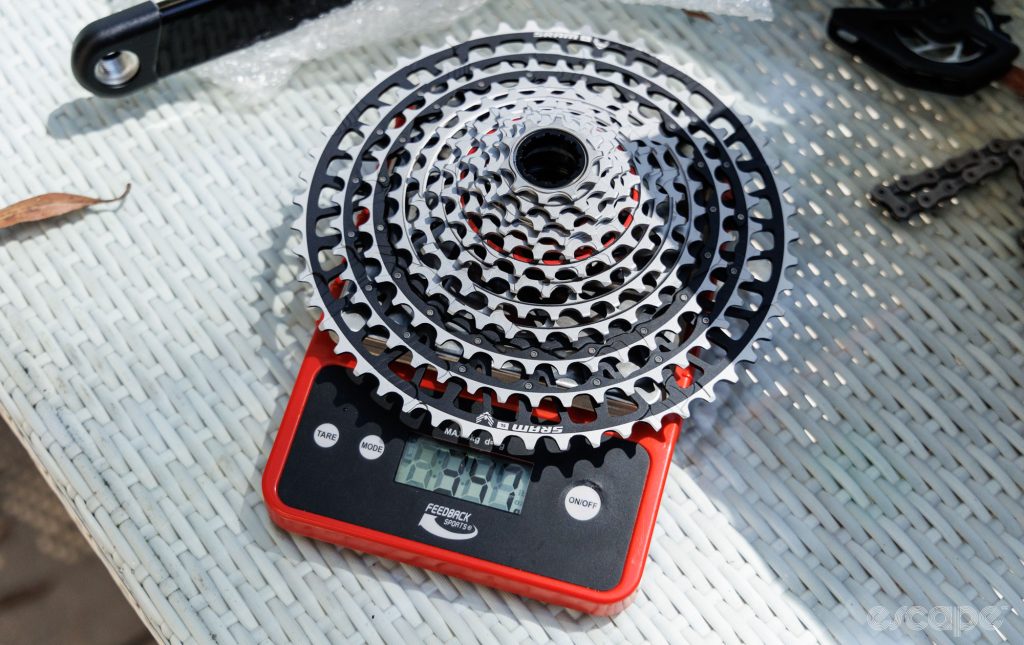
The XX SL cranks retain XX1’s hollow carbon construction, but the previous three-bolt direct mount chainring interface has been updated to the eight-bolt pattern found on SRAM’s newer road cranks. This new eight-bolt interface can be accompanied by a wholly new and simply brilliant spider-based powermeter. The XX SL crank is available in either 168 or 174 mm Q-factor options.
This XX SL Quarq powermeter is the latest iteration of what the likes of Nino Schurter and Kate Courtney have been racing with for years. However, while this looks like the same disposable one-piece chainring and power unit combined, it’s not. Instead, the outer chainring portion (available in 32-38T sizes) threads onto the circumference of the spider and is then locked in place with a small grub screw. When replacement time is needed, SRAM has a unique tool that leverages from the pedal insert to unscrew the ring from the power spider. The powermeter itself offers the usual features found in Quarq’s top-end offering, including a claimed +/- 1.5% accuracy, 200-hour battery life off a CR2032 battery, and automatic calibration.
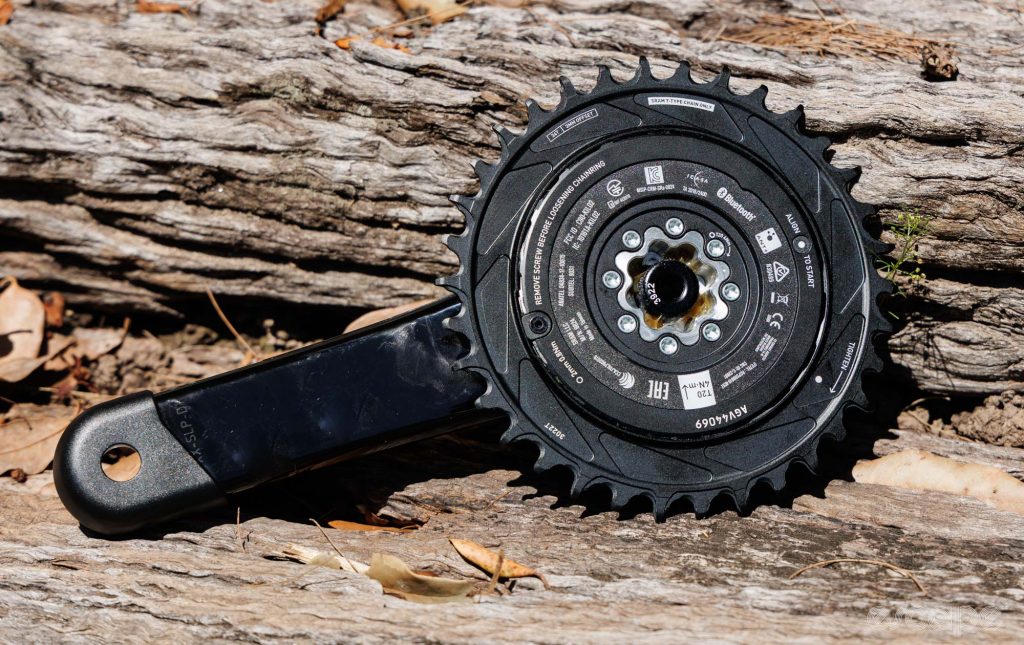
With 170 mm crank length, 34T chainring, and dual-sided power, my sample crankset weighed an impressive 548 g. That’s just 74 g more than the ultralight RaceFace Next SL cranks that were on the bike previously. Unfortunately, I don’t have a weight for the XX SL crankset with a regular (non-power) chainring.
Then there are the new shifter pods. As tested, the new Ultimate shifter is a light 52 g with the MatchMaker clamp, or just 45 g with the Infinity bar clamp. That’s 25 g of saving from the GX AXS shifter and MatchMaker clamp that I had on the bike previously.
All told, and excluding the cranks, the new XX SL group is less than 10 g lighter than the previous generation XX1 AXS. And while it’s not an apples-to-apples comparison (variance in cable lengths, etc.), a current Shimano XTR 12-speed mechanical drivetrain (again, without the crank, XTR is heavier) weighs about 10 g more than Eagle XX SL with the necessary UDH hanger.
Alright, so what about the more affordable options? XX and X0 are designed to handle it all, from cross-country racing, to trail, to Enduro racing, to e-bike usage.
The XX rear derailleur (441 g claimed, without battery) retains the Magic Wheel lower pulley and adds some skid plates for protection. By contrast, the X0 derailleur (451 g claimed without battery) does away with the Magic Wheel. It’s worth noting that those skid plates can be removed, and then you can upgrade the cage assembly to achieve a derailleur weight that is close to XX SL.

Both XX and X0 use a mostly machined steel cassette where the 38 and 44T cogs are separate steel items pinned to an aluminium 52T cog. Both are claimed to weigh 380 g but the XX version gets more durable surface coatings. The XX chain features solid plates and hollow pins, while the X0 chain has solid plates and pins. According to the company, the XX chain is the strongest SRAM has ever produced.
The cranks are where these transmissions truly diverge. The XX and X0 cranks are only available with a wider 174 mm Q-factor and have removable bashguard wings to protect the chainring from direct strikes. Not compatible with XX SL cranks, these bashrings are aluminium at the XX level and plastic for X0. These bashguards are also chainring-size specific and, from an aesthetic sense, are sure to be a polarising feature. I haven’t seen them implemented since RaceFace briefly offered them with its triple-ring cranks. Thankfully you can choose to use two, one, or none.
The XX crank is carbon with a foam core and can be used with the previously mentioned XX SL chainring power meter or with the cheaper spindle-based unit limited to left-sided measurement (and a claimed +/- 3% accuracy). Of course, you can run it without power, too.
And as an unexpected departure, the X0 crank is now aluminium with a hole in it. And it’s not just any hole; it’s one designed by AI. SRAM hasn’t provided claimed weights for these cranks, but the company did state they’re lighter than Shimano XTR (which are 548 g with a 32T chainring). This alloy crank can be matched with a spindle-based power meter, but not the fancier chainring style.
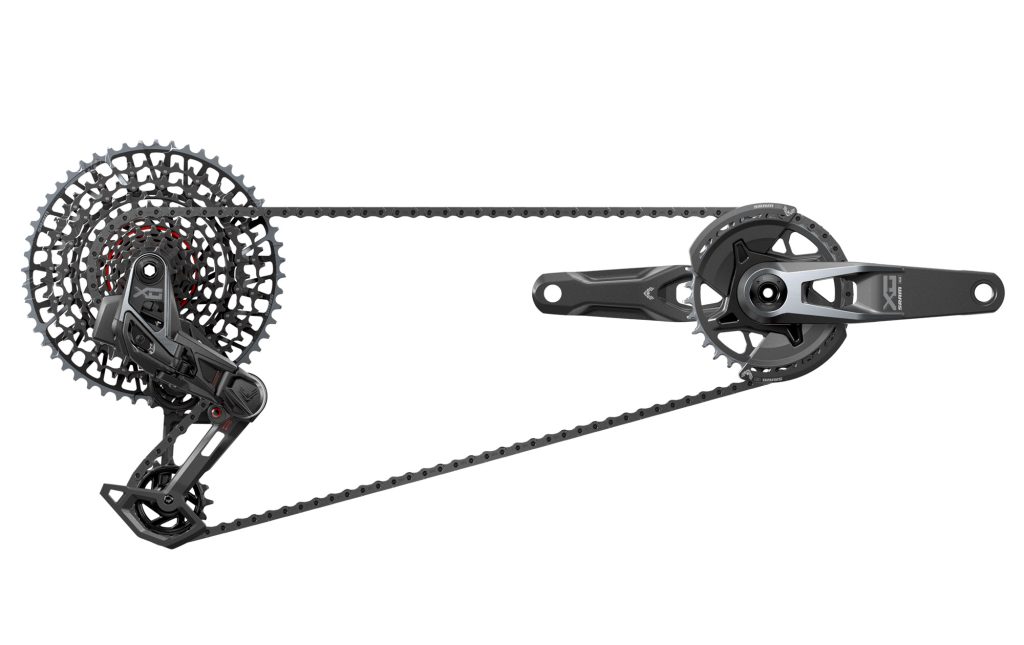
OK, let’s talk prices. Some pieces cost less than the products they’re superseding but what stands out is that the wear items have increased in price. For the sake of simplicity, I’ll provide USD prices only.
The new XX SL and XX rear derailleurs retail for US$650, while the X0 is US$550—all without a battery. By comparison, the previous XX1 and X01 versions are US$753 and US$538, respectively. New pod shifters are US$150 for the basic version or US$200 with customisable buttons.
As tested, the XX SL crankset with powermeter is US$1,050, while the same crankset without power is US$550. A XX crankset with the same spider-based powermeter is US$950, while the simpler spindle-based powermeter drops that price to US$750. Giving up the powermeter entirely brings the XX crankset to US$500. The alloy X0 crank is a pretty-impressive US$400 with spindle-based power or US$300 without.
The new XX SL, XX, and X0 cassettes are priced at US$600, US$550, and US$400. The previous XX1 and X01 cassettes cost US$483 and US$415, respectively. Meanwhile, chains have gone up considerably in price. XX SL is US$150, XX is US$125, and X0 US$100. Previous Eagle XX1 and X01 chains are US$93 and US$64.
As complete drivetrains including shifter, battery, and charger, XX SL is US$2,200 without a powermeter or US$2,700 with. XX is US$2,050 without power or US$2,300 with a spindle-based powermeter. And the cheapest option is X0 at US$1,600. These prices do not include brakes.
Stealth brakes
There are new brakes, too. These are arguably more of an iteration tweak where the calipers and hoses are unchanged, as are many of the internal workings at the lever. What’s new is an aesthetic overhaul of the lever bodies.
Named Stealth, these new lever assemblies angle the brake lines toward the handlebars for a cleaner look – especially with the new wave of bikes with headset-based cable routing.
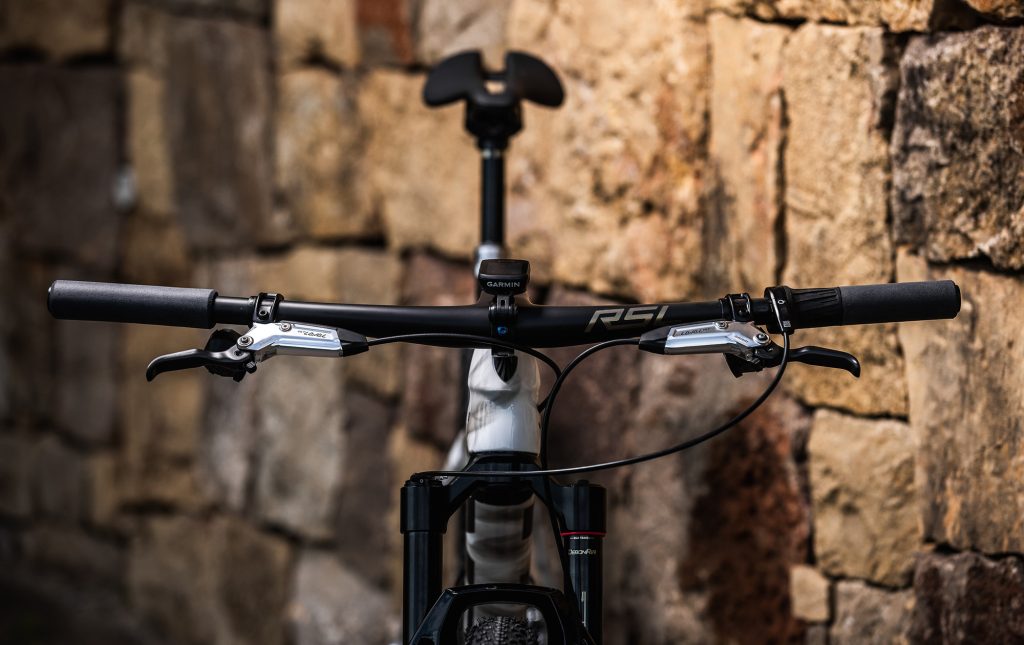
SRAM has also taken the opportunity to simplify the lineup. Gone is the trail-focused and once-upon-a-time-problem-plagued Guide (more recently named G2) brake. Replacing it are four-piston caliper versions of the Level brakes to sit alongside the lighter, more cross-country-focused two-piston versions. Meanwhile, the gravity crowd is served by the Code brake.
Perhaps the most exciting element to me is the new optional stem clips which sit behind the faceplate of common stems to assist in guiding the hoses and preventing them from rattling on the stem. This is something I like the sound of, to fix a sound I don’t like.
I’ve spent no real time on the new Stealth brakes to date.
Riding XX SL: Tickle me impressed
Before I get to the new stuff, let me explain what I’m comparing it against. I own two modern mountain bikes with groupsets I bought out of choice. My trail bike has a mix of current-generation Shimano XT and XTR 12-speed which performs exceptionally well when maintained correctly. Meanwhile, my cross-country hardtail, the same bike used to test this new group, previously had a mixed-bag drivetrain: a SRAM X0 Eagle rear derailleur (with C-Bear pulley wheels), Garbaruk 10-51T Microspline cassette, XTR HG+ chain, and RaceFace Next SL cranks.
The goal with the mixed-bag drivetrain was to achieve Shimano’s superior and benchmark shift quality (especially under power) while having the clean aesthetic of SRAM’s AXS wireless. It worked well, but as I’d often experienced with previous Eagle AXS, I’d still occasionally feel a disconnect between pushing the shift button and when the shift would happen. By contrast, Shimano’s mechanical shifting provides a consistent tactile feel with confidence that the shift will occur precisely when expected.
Enter the new Eagle transmission. This is the best shifting (at least under load) I’ve ever experienced on a mountain bike, hands down. Actually, on any bike.
When you’re just cruising, the shifting feels smooth and precise. You push the shift button, and in most gears, it’s almost Shimano road-level smooth – you can’t always tell whether the derailleur shifted. However, it’s under power that this group shines brighter than any other.
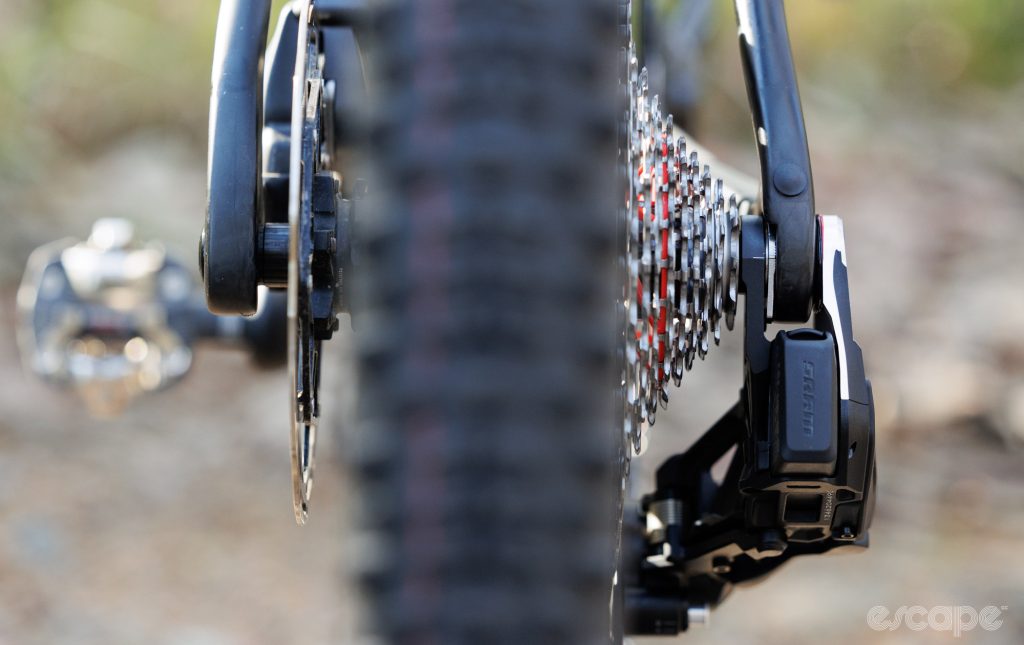
Having done this bicycle cycling thing for a while, I consider myself to have good technique. I never strain a drivetrain through poor shifting. However, SRAM encouraged me to shift under load as if I were trying to break a chain. I was initially nervous, but the shifts occurred without complaint even with my full force through the pedals. Even shifting within the 500-800 watt range is so smooth you may think it didn’t happen. And I’d say things only start to sound louder in a full-blown uphill sprint, but even then, the shifts still happen. I’ve tried, and I haven’t gotten it to mess up in moments of stress.
The shifting is lightning-fast, too. Unlike previous Eagle AXS, I now have confidence that when I push the button, I’ll be in the gear I want. This provides an incredible amount of confidence when I find myself committed on a climb without the momentum to wait for the derailleur to catch up.
It also all feels quieter and smoother than I expected. The improved clutch keeps things quieter on my hardtail than the previous Eagle AXS derailleur it replaced. That said, it’s still not entirely silent when hammering along in the smallest cassette cogs – perhaps a sign that I need some soft protection on the frame rather than solely relying on the derailleur.
There was no obvious roughness to break-in that I’ve experienced previously with SRAM. And of course, I didn’t need to touch it again once it was set up. This set-and-forget has long been a selling point for electronic shifting, but in this case, it’s true without a derailleur hanger or B-gap adjustment to worry about.

General ownership of this new transmission is also great. Those familiar with any of SRAM’s other AXS products will know it’s the simplest electronic system going. It’s easy to monitor battery life and simple to charge. Even removing the rear wheel is superior, thanks to its mechanism that lets you lock the derailleur cage in a released forward position. And regardless of cycling discipline, getting the rear wheel back in is easier than any other derailleur.
As for that powermeter? It’s the first time I’ve used a powermeter on the mountain bike without any reservations based on compromises or reliability. Recent years have seen Quarq consistently produce some of the easiest-to-use, most reliable, and most trustworthy powermeters available. This spider-based unit has seemingly carried all that over to the mountain bike space.

OK, so in my mind, this is the new benchmark in shifting performance and easy ownership, but that doesn’t mean it’s perfect.
Nuisances and concerns
The pod shifter itself is great, and I especially like the ability to use one concave and one convex button to give myself a tactile difference between the buttons. However, I couldn’t achieve an ideal distance for the shifter in relation to the grip. I’m at the edge of the sliding adjustment on the MatchMaker clamp, and yet, the Infinity bar clamp either brings the shifter too close or too far away.
I can’t answer whether my issues with the shifter placement are solved by using the new Stealth brakes. Either way, I suspect I won’t be the only fussy rider (I am incredibly fussy about shifter placement) seeking a slightly different shifter position.

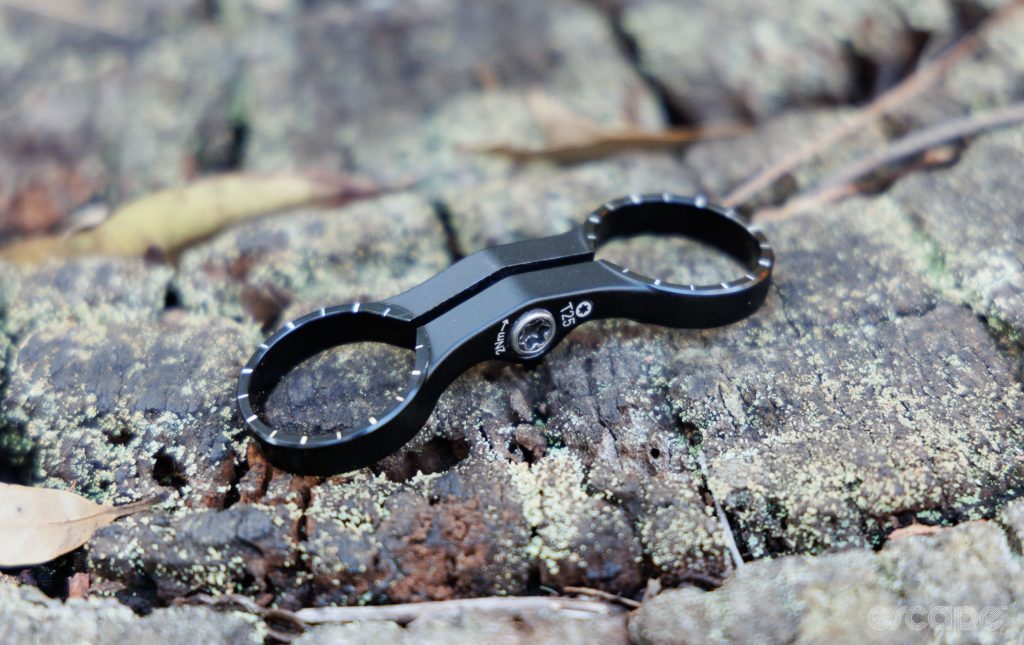
The good news is SRAM’s way of connecting the shifter pod to the mount is exceptionally simple, and it won’t be long before someone offers a range of aftermarket options. Ideally, SRAM would produce some pod holders with less of an angle to them; this would be perfect for my needs. And, of course, you can use an old Eagle AXS shifter instead.
Another thing that may bother some is that a single shift is quick, but multiple shifts are slow. My hunch is that allowing multiple shifts in quick concession could result in the dreaded twisted chain or broken cassette teeth, so SRAM has just removed the ability to do so. Instead, pressing the shift button multiple times in succession lets the derailleur stack up the commands and roll them out safely. To be fair, the jumps within the 10-52T cassette are large enough that a dump of gears is rarely needed, but there will undoubtedly be times when you’ll wish that making two or three shifts was quicker.
SRAM’s Eagle AXS derailleurs always made a “zzzt” noise when shifting to a harder gear, but that’s now louder than before. I wasn’t annoyed by the noise, but rather it’s something that a smart competitor may listen for if a race was about to come down to a sprint.
I haven’t had my groupset long enough to gauge long-term durability, but I have no real concerns over the crankset, powermeter, derailleur, or shifter. Even SRAM’s previous Eagle and newer Flat Top chains have set a new benchmark for absolute durability. That said, I think the three aluminium cogs on the XX SL cassette will wear before getting your money’s worth out of its high price. In this sense, I’d choose the marginally heavier XX cassette because only the 52T cog is aluminium.
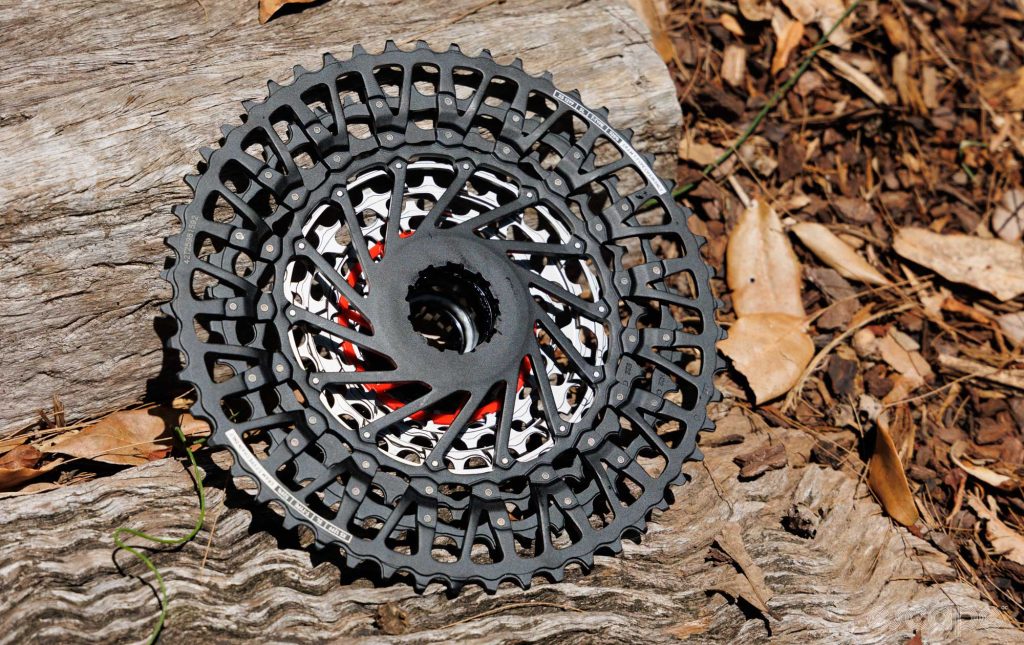
As for the rest of my complaints, they’re more theoretical concerns at this point.
Top of that list is the fact the bike industry has long shown an ability to mess up good design through poor manufacturing. SRAM’s design relies on frame manufacturers correctly making UDH frames with flat surfaces that sit square to the axle. Sure, that shouldn’t be hard, but most mechanics could tell you at least one story of how quality control isn’t always quality or well-controlled.
I’m also less stoked about being locked into a single cassette size. SRAM Eagle was once upon a time 10-50T, until Shimano went 10-51T, and then Eagle got an update to 10-52T along with a new rear derailleur to make it work. What if Shimano comes out with a 10-53T cassette? Of course, I mean this in jest, but also, there’s some real truth to it. And the current system also rules out the option of a tighter-ratio 10-46 or 10-48T cassette, which could be even better for certain cross-country and gravel racing applications.

And as a last concern, SRAM may have stepped up its game by making its components more repairable. Take the clutch for example – previous generation SRAM derailleurs featured a non-adjustable and non-serviceable clutch mechanism; a part that does eventually wear, if it doesn’t just fail before that. This new system at least allows replacement, but if I’m being critical, it’s still wasteful compared to the clean, grease, and adjust that Shimano’s derailleur clutches allow.
Looking into the future
On the mountain bike front, it’s quite evident that SRAM intends its new transmissions to be the future of the rear derailleur. It would be a safe bet to assume this technology will trickle down to a more affordable GX level, and who knows, maybe we’ll even see mechanical variants of the direct mount derailleur, too.
Of course, these new parts will be of little interest to anyone with a mountain bike bought more than three years ago. Heck, even my high-end trail bike bought in early 2020 can’t run this stuff. And that lack of backward compatibility will ensure SRAM continues to produce the old stuff for many years to come.
Shimano’s reign of having the best-shifting mountain bike groupset has come to an end. And if you can afford SRAM’s latest and have a bike that fits it, you may find out why I believe this.
The new Eagle transmissions represent a new benchmark in ease of setup, resistance to damage, and shifting, even for those without the slightest clue of technique. And that has me thinking about what Shimano will do next. A patent or two has already surfaced showing that Shimano is working on a similar direct mount derailleur concept. That may merely be a strategic defence, but when combined with patents floating around for self-powered shifters and other mysterious wonders it’s easy to get excited for the next generation of drivetrain battles.
What about the dropbar market?
There are smaller details within this new transmission that could appear in the next iteration of SRAM Red or XPLR. Take that thread-on chainring and powermeter combination, for example. It gives me hope for more-serviceable powermeter designs versus the current one-piece product offered in Red and new Force. The new pod shifter could be great for those seeking a climbing shifter or similar – at least if more clamp options were made available. And the new narrow-wide cassette cogs could be used to achieve even better loaded shift performance.
SRAM has successfully taken market share within mountain biking, but the road market has arguably proven a tougher space. It remains to be seen whether SRAM can get enough industry support to make a road version of UDH a reality. However, the fact that just about every new road bike now has a 12 mm thru-axle suggests one of the hardest battles may have already been won.
No doubt, if we ever see Road UDH then that’ll be the writing on the wall for a dropbar version of this integrated and direct-mount transmission. Hopefully, one day I can tell you I told you so.

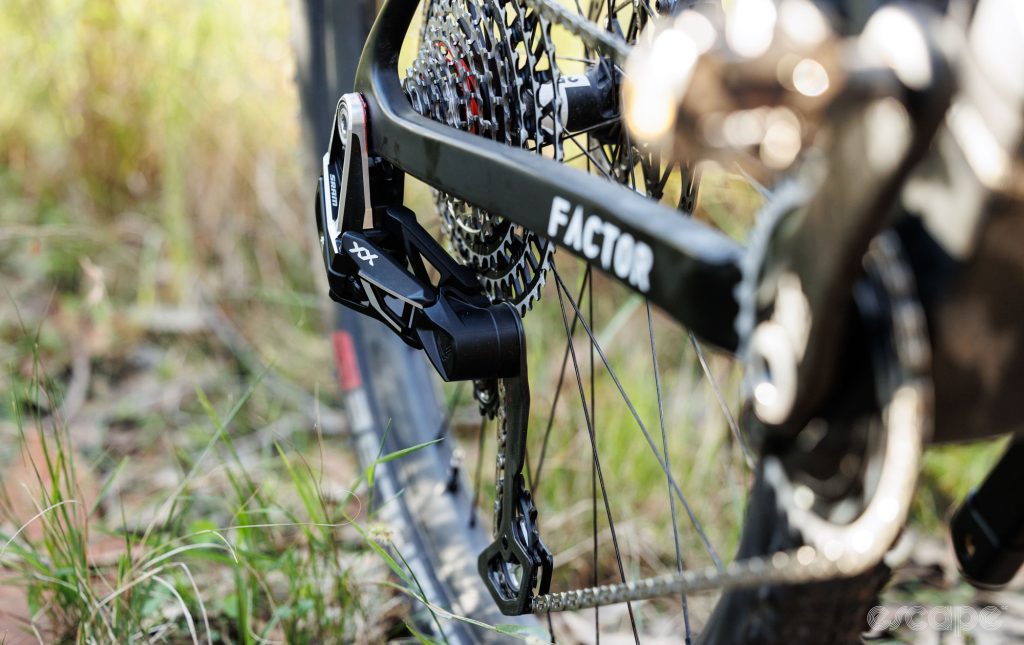
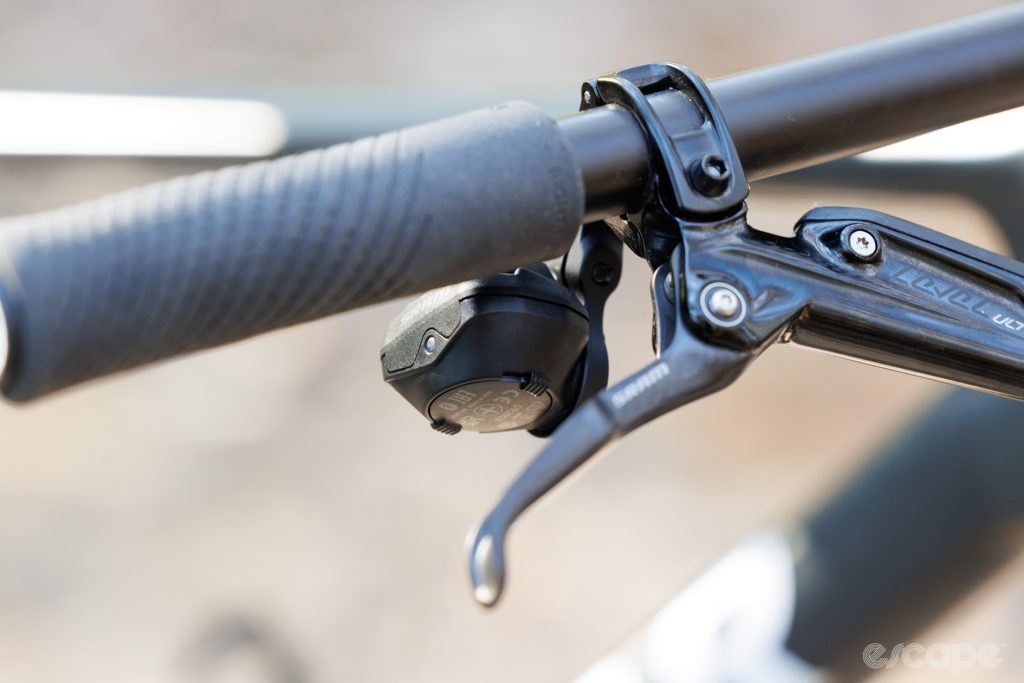
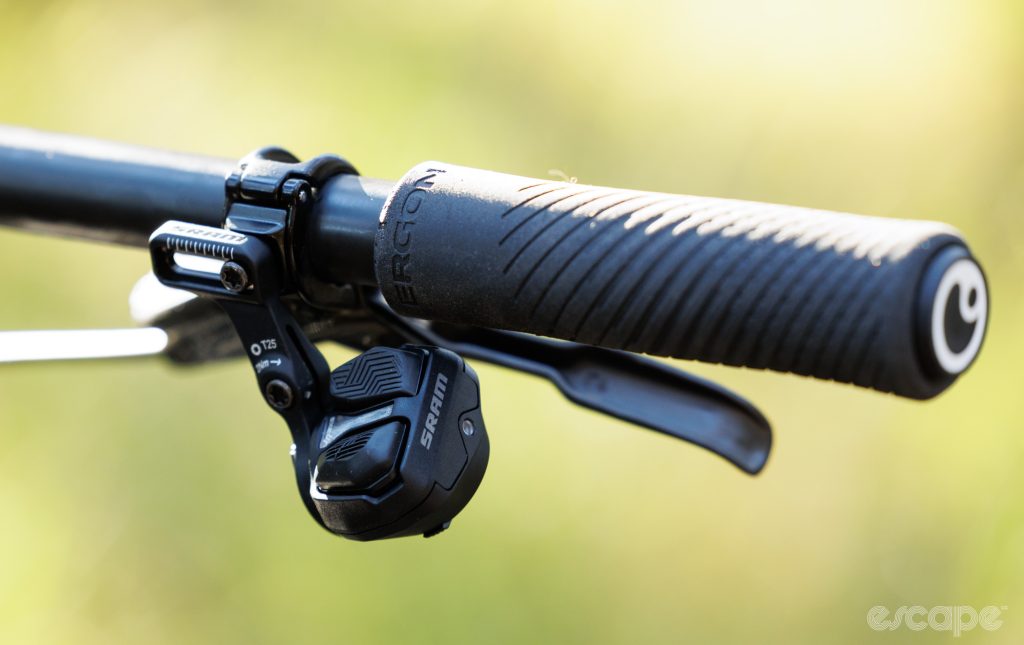
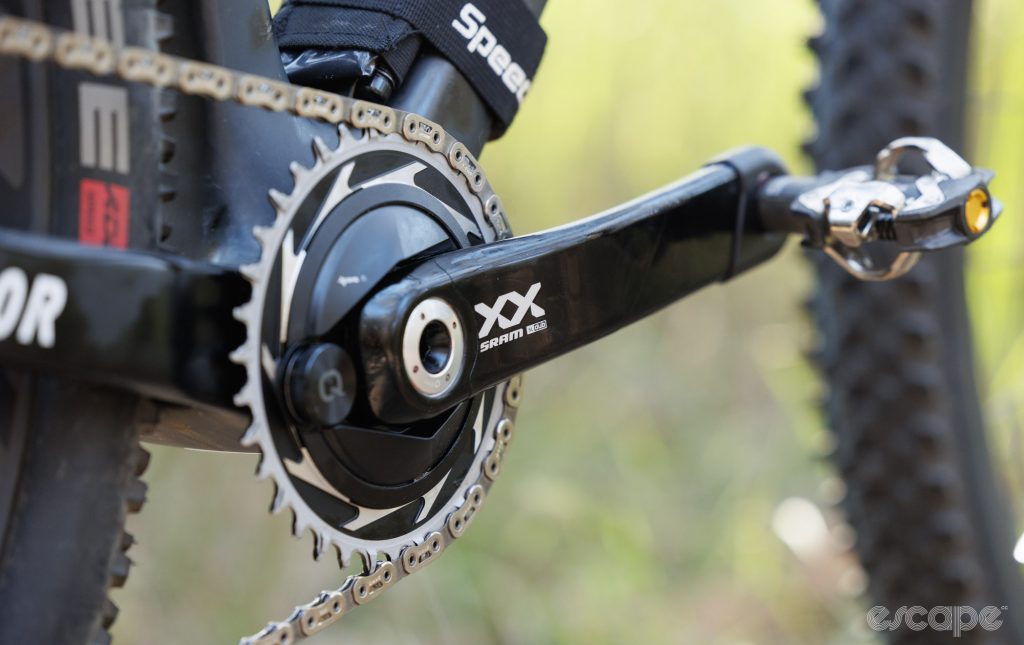

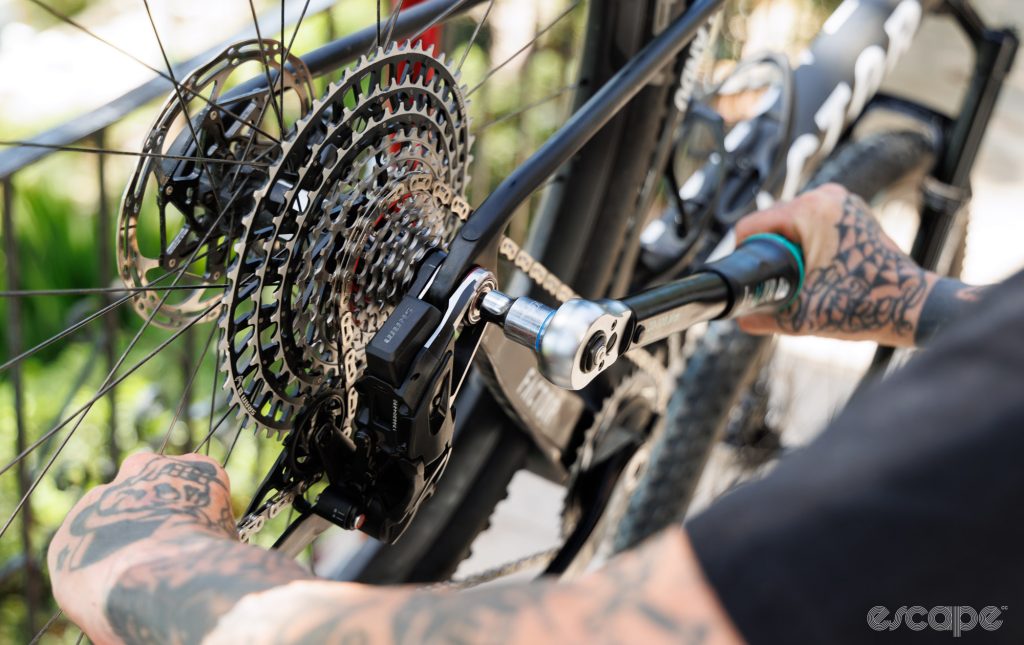
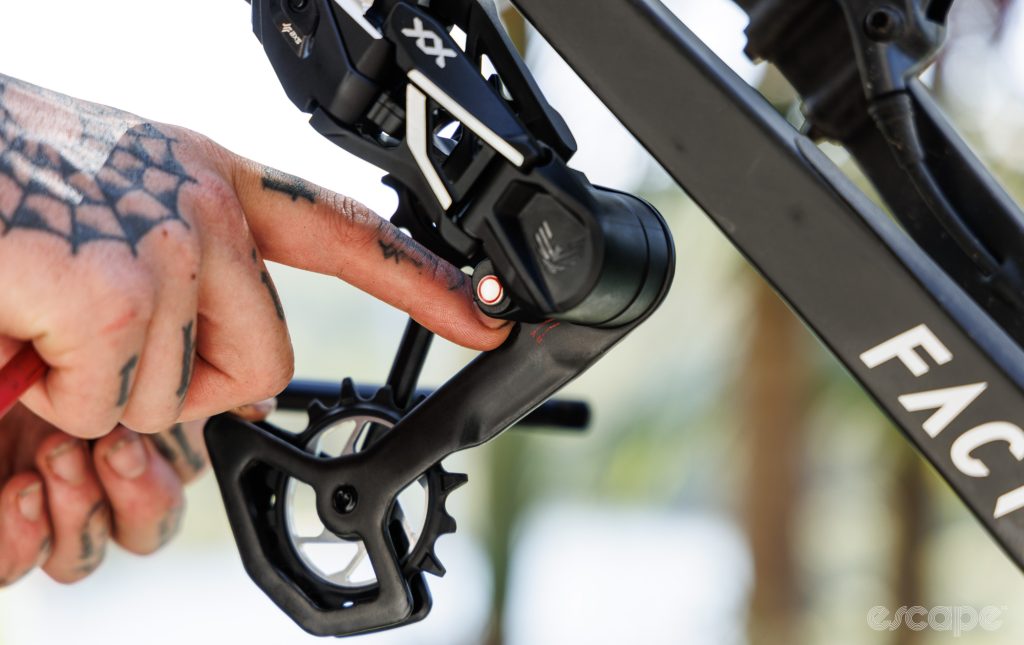


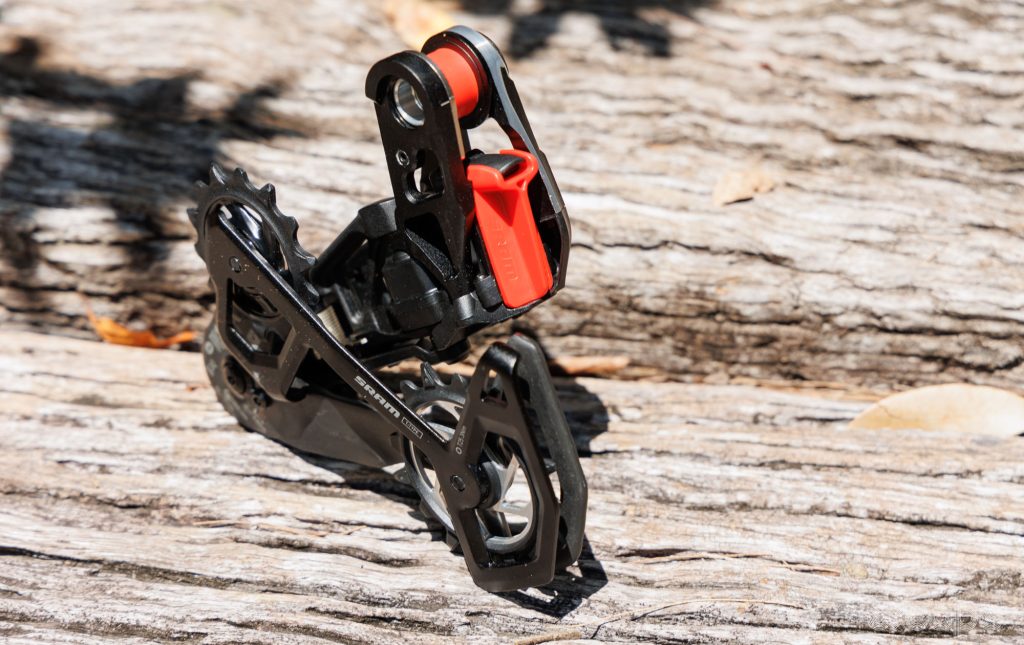
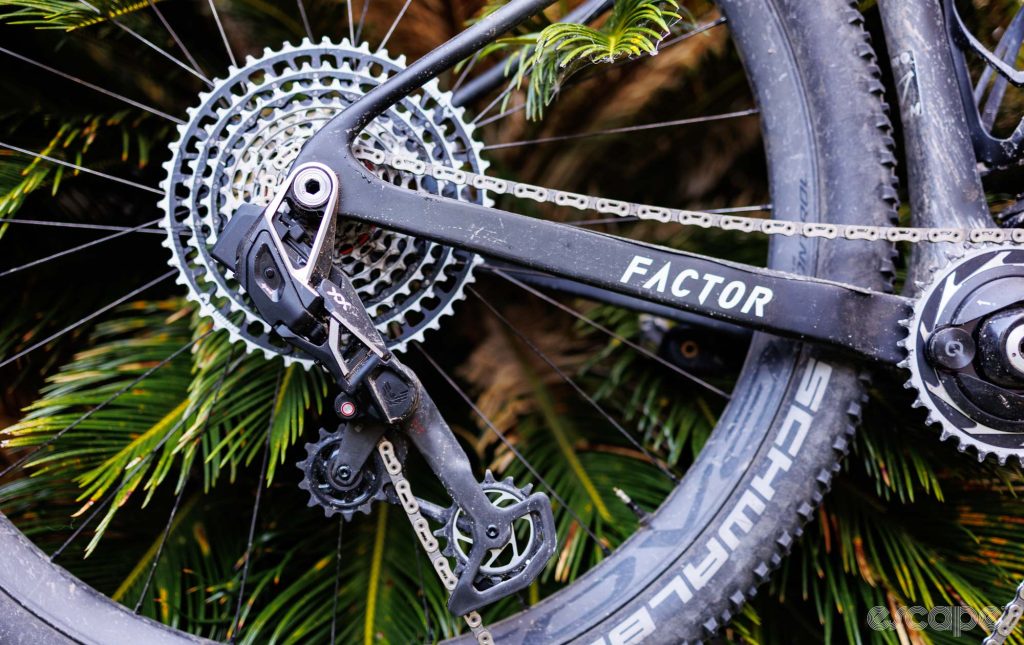
What did you think of this story?
